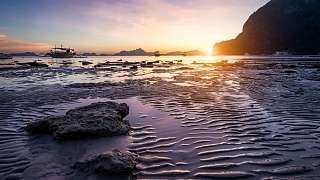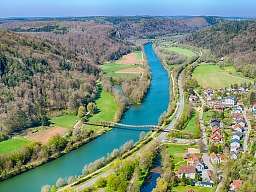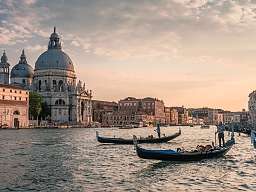Romantik Blog
UNESCO World Heritage Site
After the low tide comes the high tide, after the high tide comes the low tide - an interplay like day and night that led to a fascinating ecosystem: the Wadden Sea. The forces of nature shaped the World Heritage Site into a distinctive landscape that is home to rare animal and plant species. The tides, also called ebb and flow, are particularly strong on the North Sea coast and determine life in and around the Wadden Sea. Low tide and high tide last six hours each, so there are two high tides and two low tides per day. Each time the sea retreats, only to return a little later with untamed power, a new impression of the landscape is created. At low tide, the seabed stretches for kilometres. Then the Wadden Sea can even be explored as far as the offshore islands. An experienced mudflat guide accompanies visitors to the North Sea on their way through the mud and explains everything worth knowing about this fascinating habitat.
In time with the tides: Wadden Sea World Heritage
Earth, moon and sun influence our seas. It is the interaction of many factors that contribute to the tides. Above all, it is the gravitational pull of the moon and the centrifugal force that occurs when our earth and moon rotate. The gravitational pull of the sun as well as the position in relation to the moon and the earth are not insignificant in determining the intensity of the movement of the water. A spring tide, for example, occurs when the three celestial bodies are on the same course. In contrast, the so-called neap tide occurs when the sun and moon are at right angles to the earth.
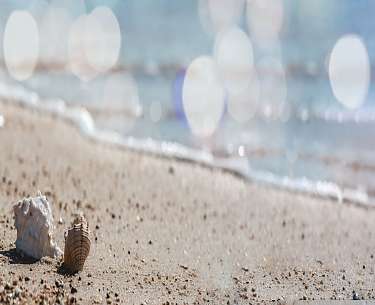
Coastal life has adapted to the tides
At first glance, it may seem impossible to adapt to the unpredictable forces of nature. But both the animal world and mankind found ways and means to live well despite the extreme conditions. The green Queller plants on the mudflats, for example, care very little that they are flooded twice a day. They have long since learned how to cope with it. Seals, undisputedly the most popular inhabitants of the Wadden Sea, hunt for fish and shrimp at high tide, at low tide they relax on the sandbanks, where their offspring also come into their own.
UNESCO World Heritage Wadden Sea
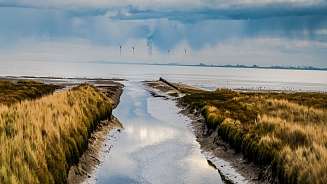
The Wadden Sea stretches from Esbjerg in Denmark to Den Helder in the Netherlands and is considered one of the most unique coastal areas in the world. The German Wadden Sea is divided into national parks. The Schleswig-Holstein Wadden Sea was a pioneer when it was recognised as a national park in 1985. The Lower Saxony Wadden Sea followed only a year later, and in spring 1990 the smallest, the Hamburg Wadden Sea, followed suit. In addition to the German Wadden Sea, the Danish Wadden Sea also received the coveted National Park status. The uniqueness of this precious natural heritage was also recognised internationally in 2009. In that year, UNESCO designated the Dutch and German Wadden Sea areas as World Heritage Sites, and since 2011 the section belonging to Hamburg has also been included. Together with tidal flats in the Netherlands and Denmark, the Wadden Sea World Heritage Site now covers 11,500 square kilometres, making it the world's largest tidal flat island area. Especially for your health, a rest at the North Sea is worthwhile: the salty air and the stimulating climate are a pure blessing for body and soul. Hiking in the mudflats, walking barefoot through the mud or taking a soothing mud bath in one of the thalassotherapy centres are confirmed by many visitors as beneficial and healing.
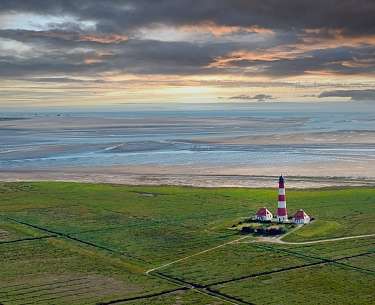
Schleswig-Holstein Wadden Sea
"Seabed meets horizon" - the well-known motto of the Schleswig-Holstein Wadden Sea National Park is based on the fact that the North Sea retreats twice a day and exposes the tidal flat floor at low tide. This fantastically beautiful wilderness area offers its visitors fine sandy beaches, diverse fauna and flora and numerous, offshore islands. Not to forget - the North Frisian Halligen. The Eiderstedt peninsula probably deserves special mention. Whether a visit to the Westerhever lighthouse, a canal trip in Friedrichstadt or a relaxed stroll at Tönning harbour - a visit to the peninsula is worthwhile in any case. In addition, a well-developed network of cycle paths and the railway line between Husum and St. Peter-Ording make for an environmentally friendly and beautiful journey.
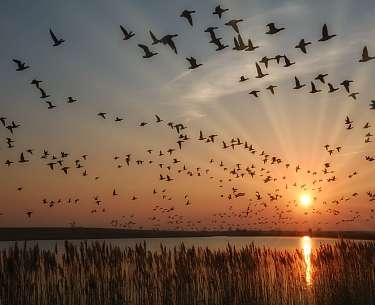
Hamburg Wadden Sea - An Eldorado for Birdwatchers
The Hamburg Wadden Sea National Park impresses with its unspoilt landscape, which invites you to take long walks through the salt marshes. Visiting the seal banks and observing the numerous birds during the breeding season or at the resting places are among the best things to do in the Hamburg Wadden Sea. Of course, the wide beaches here also invite you to take a dip in the North Sea, and a guided mudflat hike is also highly recommended.
Besonderes Highlight:
Breeding and migratory birds can be found here, as well as the famous lugworms and grey seals. Attentive observers can even spot harbour porpoises in this part of the North Sea. Very exciting, especially for the little ones, is tracking down the "Small Five" in the Wadden Sea. Besides the cockle, shrimps, shore crabs and mudflats snails, the lugworm is also one of the "Small Five" of the Wadden Sea. Not only does it belong, it is also the most important of the animal inhabitants of the mudflats. As it constantly searches for food in the soil, the lugworm cleans and aerates the mudflats and is thus an important component for an intact nature.
But no matter in which region the best days of the year are spent, holidays in time with the tides remain unforgettable.
Post your comment
Comments
No one has commented on this page yet.
RSS feed for comments on this page RSS feed for all comments
